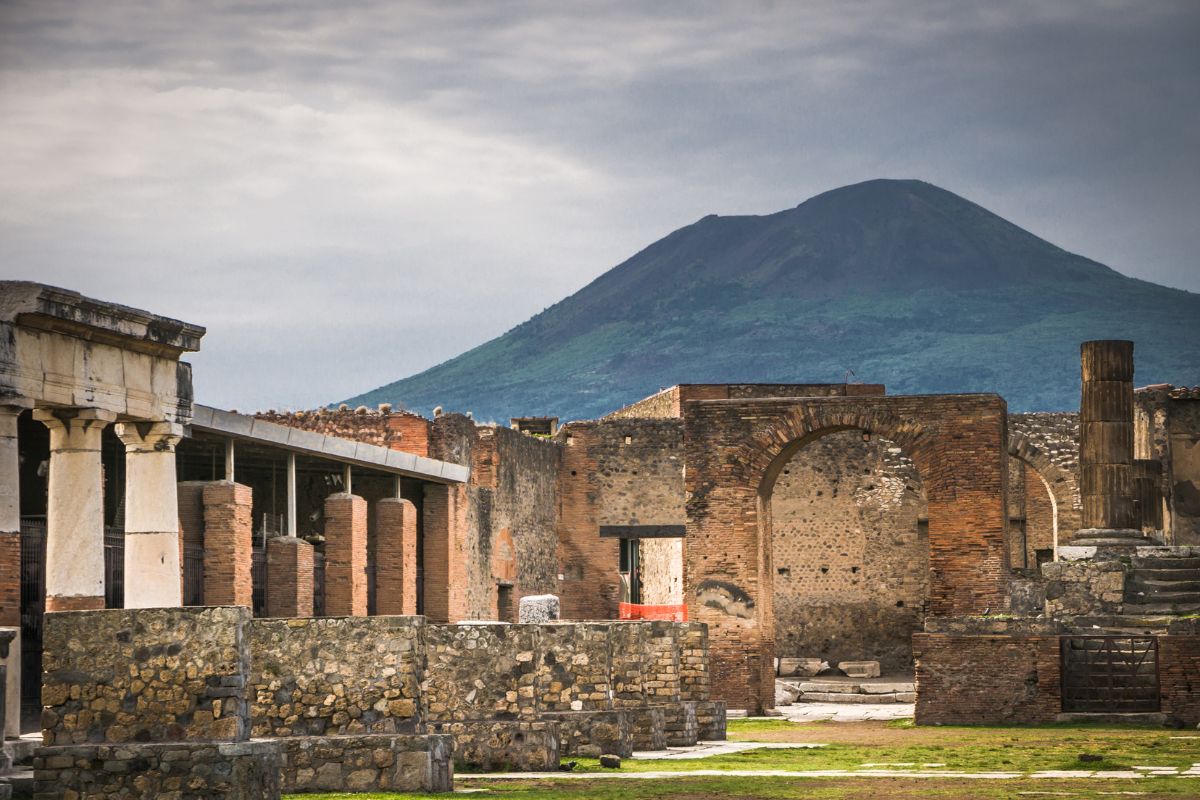Show table of content Hide table of content
The eruption of Mount Vesuvius in 79 AD sealed the fate of Pompeii and Herculaneum, preserving countless artifacts beneath layers of volcanic ash. Nearly two millennia later, researchers have made a remarkable breakthrough in analyzing one of history’s most elusive treasures: ancient manuscripts buried under Vesuvius’s destructive force. This scientific achievement represents a pivotal moment for archaeology and classical studies, revealing texts once thought permanently lost to time.
Revolutionary imaging technique reveals hidden ancient text
A manuscript over 2000 years old, preserved under Vesuvius’s volcanic ash, has recently yielded its secrets thanks to groundbreaking technology. This remarkable discovery came through combining advanced X-ray imaging with computer-assisted simulation, enabling researchers to virtually unroll the fragile document without physical manipulation. The breakthrough has revealed readable text on a scroll too delicate to handle conventionally.
“It’s the first roll where ink is visible on the scan. Nobody knew what it was. We didn’t even know if there was writing,” explained Dr. Michael McOsker, a papyrologist from University College London, in an interview with The Guardian. The excitement surrounding this achievement stems from decades of frustration among scholars who possessed these ancient treasures but lacked the means to access their contents.
The scroll originated from a luxurious Roman villa in Herculaneum, believed to have belonged to Julius Caesar’s father-in-law. Excavations in the 18th century uncovered these buried treasures, which found their way to the Bodleian Library at Oxford University. For centuries, these carbonized scrolls remained tantalizingly closed books, their contents concealed by their fragile condition that caused them to crumble when handled.
After careful analysis of the revealed letters, researchers have attributed the manuscript to Philodemus, an Epicurean philosopher who lived between 110 and 35 BCE. This attribution confirms the text’s remarkable age – over two millennia – and identifies its subject matter as a philosophical examination of vices. The discovery of ancient philosophical insights provides modern scholars with fresh perspective on classical ethical thought.
Global competition spurs technological innovation
The technological breakthrough didn’t happen by chance. In 2023, the Vesuvius Challenge was launched, incentivizing researchers worldwide to develop methods for reading and deciphering manuscripts recovered from Vesuvius’s ash. This competitive approach proved remarkably effective in accelerating innovation in this specialized field.
By 2024, a research team shared a $700,000 prize for developing an AI model capable of reading 2,000 Greek letters on another manuscript from the same collection. The pace of advancement has astonished classical scholars accustomed to methodical progress spanning decades. “The pace is accelerating very quickly… All the technological advances in this area have been made in the last three to five years, and on the timescale of classicists, that’s amazing,” Dr. McOsker told The Guardian.
Science This strange red lake in Tanzania turns animals to ‘stone’.
The competition’s success demonstrates how targeted incentives can drive rapid scientific progress. Similar to how algorithmic approaches have solved seemingly impossible problems in other fields, the Vesuvius Challenge channeled diverse expertise toward a specific archaeological obstacle.
With the manuscript’s title and author now identified, researchers are working to decipher all remaining letters to reconstruct a coherent text. The speed of recent developments suggests this goal may be achieved sooner than initially expected, opening doors to further discoveries within Herculaneum’s library.
Herculaneum’s hidden literary treasures
While Pompeii often dominates discussions about Vesuvius’s eruption, Herculaneum harbors equally significant archaeological treasures. This Roman city, also devastated by pyroclastic flows in 79 AD, has yielded numerous manuscript scrolls that promise to expand our understanding of classical literature and philosophy.
The villa where these scrolls were discovered represents one of antiquity’s most significant private libraries. The connection to Julius Caesar’s family underscores the prestigious nature of this collection. Until recently, scholars could only speculate about the contents of these carbonized scrolls, making each successful reading a momentous occasion.
The ability to finally access these texts provides an unprecedented window into ancient intellectual life. “Everything we get from the Herculaneum library is new to us,” noted Dr. McOsker, highlighting the scholarly significance of these manuscripts. Unlike reunions with long-lost historical elements, each decoded manuscript represents entirely new material rather than rediscoveries of known texts.
The manuscript attributed to Philodemus adds to our knowledge of Epicurean philosophy, a significant school of thought that emphasized pleasure as life’s highest good while advocating moderation and intellectual pursuits. His writings on vices would have provided ethical guidance to Roman elites of the late Republic, making this text valuable for understanding both philosophical development and practical ethics in the ancient world.
Future prospects for vesuvian manuscripts
The successful decoding of this manuscript opens possibilities for analyzing hundreds more scrolls recovered from Herculaneum. With technology advancing rapidly, scholars anticipate accelerated progress in revealing these long-hidden texts. Each newly deciphered scroll could potentially transform our understanding of classical literature, philosophy, and history.
The techniques developed through the Vesuvius Challenge may find applications beyond these specific artifacts. Similar approaches could potentially help researchers examine other damaged or fragile historical documents worldwide. The ability to detect hidden information in deteriorated materials represents a significant advancement for conservation science broadly.
Science 50 years later, a quantum mystery has finally been solved.
As artificial intelligence and imaging technologies continue to evolve, the barrier between present and past grows increasingly permeable. Texts once thought permanently lost to history may soon share their wisdom with modern readers, bridging a gap of two millennia and allowing ancient voices to speak again.
The Herculaneum scrolls represent just one application of these emerging technologies. As researchers refine their methods and expand their toolkit, countless other historical mysteries may yield their secrets, transforming our understanding of human intellectual history one ancient manuscript at a time.


